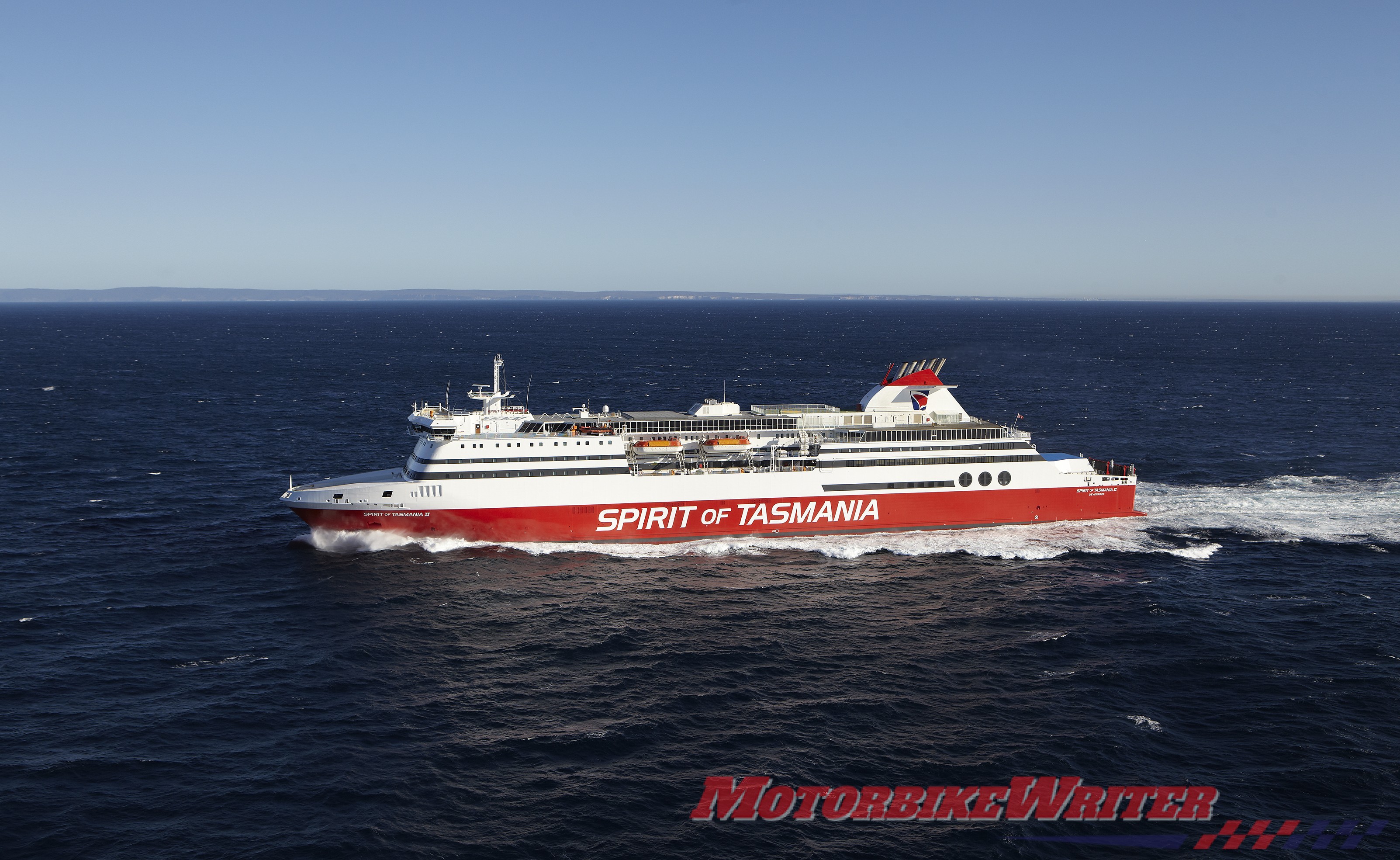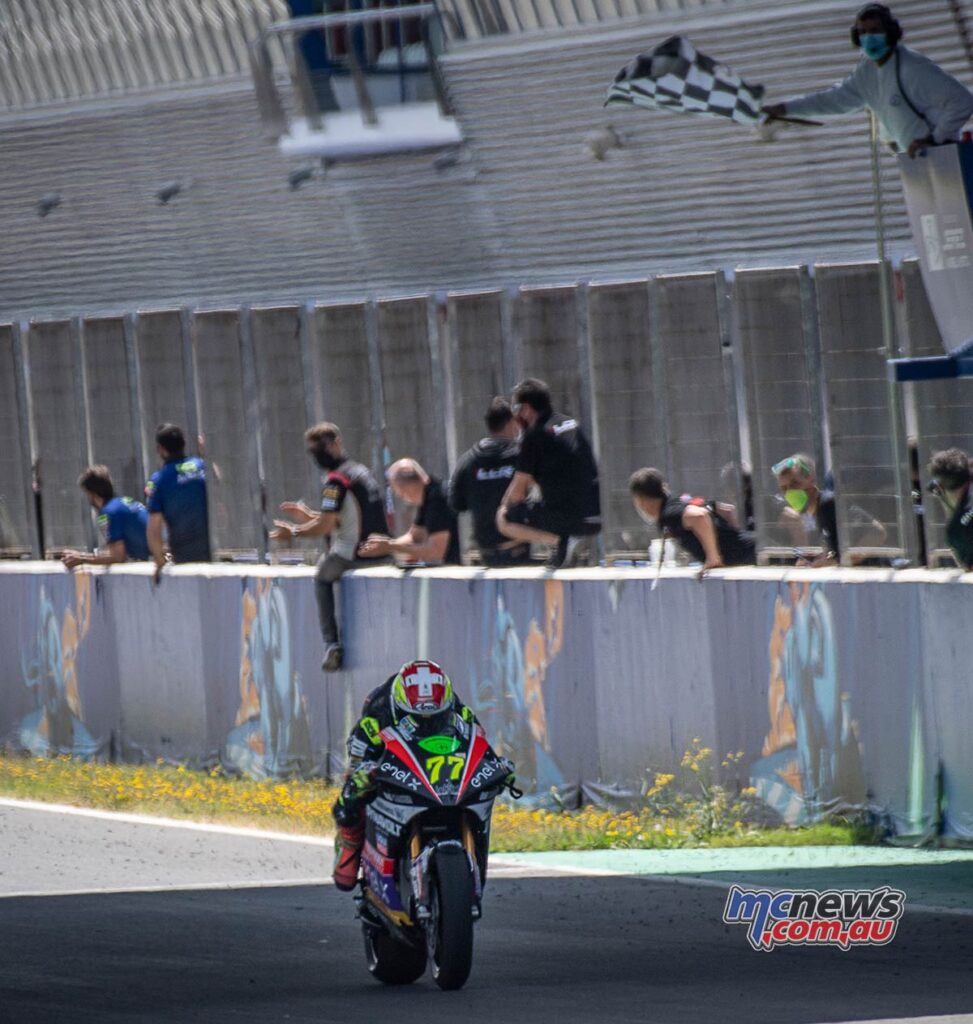The Federal Government is soon expected to announce free or discounted ferry fares to Tasmania to promote tourism after the island closed down during the pandemic.
However, it is not clear whether motorcycles will be included in the tourism promotion.
The move was first mooted in May, but the borders have been closed for longer than expected.
Tourism Industry Council Tasmania CEO Luke Martin has been calling on the Federal Government to temporarily extend the Bass Strait Passenger Vehicle Equalisation Scheme that covers the gap between the true cost of taking a vehicle on the ferry and the ticket price.
That would make fares attractively cheap or even free.
The proposal has been supported by Premier Peter Gutwein and the Motorcycle Riders Association who had asked riders to email the Premier to show their support.
Hobart-based MRA spokesman Damien Codognotto says mainland and overseas motorcyclists have made “significant contributions to Tasmania’s economy”.
“Over a million Australians are licensed to ride. Encouraging riders to holiday on the Island by carrying motorcycles and scooters free on the ferries makes financial sense,” he says.
Damien says it would be foolish to exclude motorcycle riders from any fare promotional offers.
“On-board riders spend as much as tourists in cars, vans and recreational vehicles,” he says.
“Bikes weigh less and use less space and weigh less than cars, vans and RVs. You can fit four bikes in the space of a car.
“Touring bikes are often two up so a car space can yield up to eight spending tourists. A car can yield up to five tourists but mostly doesn’t.
“By not charging $238 return for bikes you encourage more riders to visit Tasmania. That means more dollars spent on food, drink, cinemas and souvenirs.
“The $238 saved will be spent on the holiday so per square metre, motorcycles are worth more than cars on the ferries.”
He also claims motorcycle riders are good tourists, travelling light and spending well on accommodation, bike hire, retail sales and services.
“Tourists on motorbikes spend more per kilometre than tourists in cars and RVs because they travel light,” he says.
“A bonus is their machines cause less wear and tear on our roads, kill less wildlife and pollute less, even less as electric motors replace petrol engines.”
Motorcycle tourists have often been claimed to be among the most desirable for local businesses, spending more than other motorists.
For example, Tourism Queensland estimates motorcycle tourists spend up to $160 a day in local communities on food, drink, accommodation, fuel and necessities, while caravaners are more self-contained and only spend about $40 a day.
“Hospitality businesses and attractions like MONA, Port Arthur, Bruny Island, the West Coast Railway and more benefit from rider spending,” Damien says.
A Spirit of Tasmania spokesperson says the current motorbike fare starts at $69 each way in the low tourist season.
It can rise to $99 in the high season or $109 for a flexi fare. Sidecars and trailers can lift the price to as much as $139 each way.
A discount or free fare would encourage more riders. Not that riders need much encouragement to head to Tassie. Charley Boorman rates it one of his favourite riding destinations.
The Tasmanian Government loves to welcome visiting motorcyclists, but also promotes important road safety messages about roads and riding conditions in Tasmania.
They have produced a Tasmanian Motorcycle Travel Guide video which is given to all motorcyclists when they board the Spirit of Tasmania.
It is one of many motorcycle-oriented tourism videos they have released.
In 2015, they produced a video featuring multi-Australian Superbike Champion Malcolm Campbell and interstate motorcycle club member Lester Knowles riding around the state and pointing out the features and dangers.
Each year the video is updated.
Road safety billboards and posters are also displayed on popular riding routes.
[ad_2]
Source link




